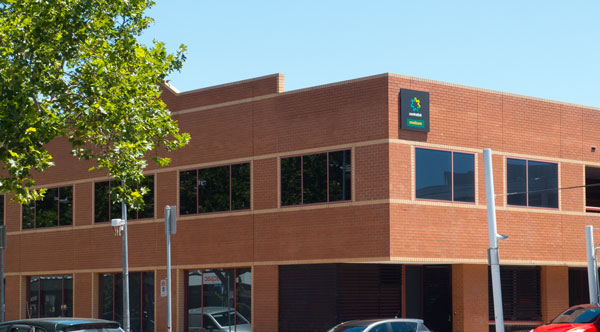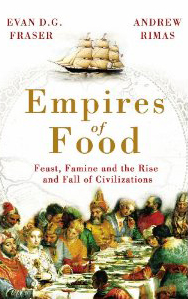How political decisions overrule logic and good planning

First the good news. The ACT government is committed to adding overdue facilities to the Woden Valley Hospital.

First the good news. The ACT government is committed to adding overdue facilities to the Woden Valley Hospital.

Here’s a message from me – and the many others who suffered through the flu recently:
This goes out to those thoughtful people who insisted on going out into public areas when they had the flu.

Medicare was great. Having a universal health care system was the envy of many other countries.
 There is a very hard-hitting article in the August 2014 issue of The Monthly on how the two large supermarkets have been allowed to rip anyone and everyone off. Even more depressing is that it points to how we, as consumers, are continuing to allow this to happen.
There is a very hard-hitting article in the August 2014 issue of The Monthly on how the two large supermarkets have been allowed to rip anyone and everyone off. Even more depressing is that it points to how we, as consumers, are continuing to allow this to happen.
The major point raised by the article is how this dominance of the two of these supermarkets has reduced the food security in this country.
(part of the series on the 2014 Environmental Design Research Association (EDRA) conference
“Urban agriculture is a phenomenon today,” said Farham Karim, an architectural historian at the University of Kansas, at the Environmental Design Research Association (EDRA) conference in New Orleans. Upwards of 70 million people are now involved around the globe — on Farmville, at least, the popular game app, he laughed. But, in reality, there are many tens of millions farming on the ground, too. With all the growing interest, Karim played devil’s advocate, wondering: is urban agriculture scalable? And who is going to be doing all this urban farming? And if we know it’s not a cost-effective solution for solving the world’s food problems, why the persistent interest?
click here for the full article.
————————————
Paul Costigan, 17 June 2014
City main street networks show a drastic shift away from historic patterns of human-scale design
Have you ever wondered why some places seem built for automobiles as opposed to humans?
In a recent study, J. Alexander Maxwell and fellow researchers from the University of Strathclyde’s Urban Design Studies Unit find evidence that before the rise of the automobile, cities developed on a walkable “human” scale, with main streets that rarely exceeded 400 meters (a little more than 437 yards).
Along with Charles R. Wolfe, they argue that this uniformity reveals an underlying pattern to pedestrian city settings, which should be considered in contemporary urban design and policies.
There’s many a piece of research and publication about the links between access to parks and people’s health and wellbeing. Any urban area that includes ample public green spaces will always be sought after and the benefits are evident in the community attitudes towards their residential areas. Parks enhance the sense of community.
Most Australian urban areas usually have had parks provided as part of the urban infrastructure. However in too many cases these parks and open spaces end up not being maintained well and sadly many also become places of neglect.
 Evan D. G. Fraser and Andrew Rimas. Random House, 2010
Evan D. G. Fraser and Andrew Rimas. Random House, 2010
As if there was not enough information available on how the world is not paying attention to all the warning signs, this book was recommended to me to make me aware of the dire situation coming our way in relation to the supply of adequate food for coming generations.
This is all linked in with the issues of climate change, population growth and the way we have allowed our food supplies to be controlled by particular market and political forces. This book is a must read for all.
re-posted article: What are the social justice implications of urban ecology, and how can we make sure that “green cities” are not synonymous with “gentrified” or “exclusive” cities?
Here is Australia there is a lot of talk amongst city planners and such that there is a need for green cities, sustainable cities and lots more simplistic terms. It is very hard indeed to find amongst the rhetoric any realistic commitment to urban ecology.
The need to base all urban developments against a measure based around preserving and enhancing the soil, the ecology and the green infrastructure remains an optimistic wish for those interested in the survival of the planet. Current approaches to urban design and planning are still very much ‘business as usual’ with market forces, meaning the quick dollar, as the drivers and measures applied.
Developed by the American Society of Landscape Architects, this presentation will assist advocacy to deal with the forecasted food shortages as climate change kicks in. The presentation demonstrates how to turn a conventional community into an edible city. Learn how to transform unproductive spaces into agricultural landscapes that help fight obesity and reduce food deserts. Make sure you note the address and send it onto anyone in decision making roles.
While sustainable settlements debates more often than not focus on such key issues as climate change, carbon, energy, green infrastructure, weather etc, emphasis must also remain on the rights of children to have access to play.
It is overdue that planning and development legislation to be inclusive of the ‘need to create time and space for children to engage in spontaneous play, recreation and creativity, and to promote societal attitudes that support and encourage such activity’ (1989 UN Convention on the Rights of the Child article 31).
The problem has been that play has been a separated issue for planning. At worst it is a token of optional matter to be addressed. The contemporary view is that whether the planning is for a street, a park, a suburb or any form of redevelopment of urban areas, play and the rights for children to have access to safe and engaging recreation must be as important as the rest of the requirements. This is rarely the case.
Reporting on research being undertaken
You are urged to ‘watch this space’ for research and reports by scientists who have been carrying out research on Urbanism, Climate Adaptation and Health. To quote from their website:
Safeguarding future health in Australian cities, The CSIRO Climate Adaptation Flagship has funded scientists and researchers from a range of disciplines to develop adaptation strategies which will improve the health of urban populations in the face of a variable and changing climate.
The Urbanism, Climate Adaptation and Health Cluster was established in 2010 and officially launched in March 2011 at a Conference in Cairns, bringing together nine different partner organisations focusing on 7 major research projects.
(cross posted from our other blog)
It is about the urban heat island effect
In Australia planning authorities and government administrative services sections still do not address the proven links between health and the access to open spaces. One has to only look to the small budgets for parks initiatives and worse still to the shrinking allocations for park maintenance within local governments.
Meanwhile all our governments are under stress because of the increasing requirements being identified under their health portfolios.
Living in an urban area with green spaces such as parks has a long-lasting positive impact on people’s mental well-being, a study has suggested. UK researchers found moving to a green space had a sustained positive effect, unlike pay rises or promotions, which only provided a short-term boost.
The authors said the results indicated that access to good quality urban parks was beneficial to public health. The findings appear in the journal Environmental Science and Technology.
In the midst of a January heatwave in South East Australia, with temperature outside being around 40 degrees Celsius for several days, it is refreshing to see the science being discussed as to what happens and why. As usual there will be the trolls who try to distract the facts being put forward. I for one thank the researchers who continue to seek evidence based answers to the many queries around weather and the links to climate change. Here’s the link to the piece by Tess Parker, on The Conversation
Making cities safe for women and girls
Public health and landscape: creating healthy places (November 2013)
The UK Landscape Institute believes that greater priority needs to be given to prevention of ill health in public health and social care. All those involved in creating healthy places, public health professionals, planners and landscape architects, need to recognise that landscape has enormous potential to improve our health and wellbeing. In Australia, despite all the evidence being available, it has been a struggle to have the Australian Government recognise the importance of the links between our public spaces and the population’s health and well being.
Click here for UK Landscape Institute Public Health Policy links
Public Transit Is Underfunded Because the Wealthy Don’t Rely on It, By Keith Barry 2013
Canberra has traditionally not had a great public transport system. The population is 350,000 and as it continues to climb it is approaching the levels to support some forms of rapid bus transit or a light rail systems. There has been some very strange opposition. Maybe the article from the WIRE magazine goes some way to giving some of the possible reasons behind this opposition.